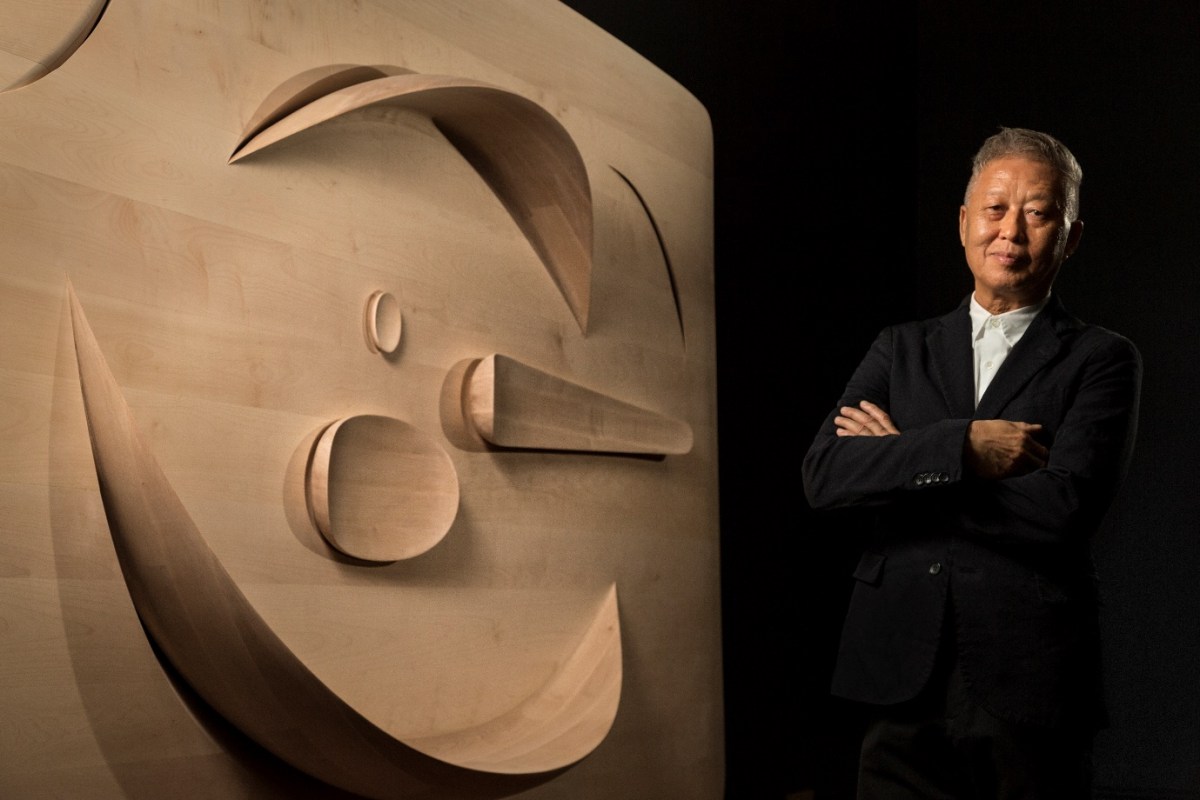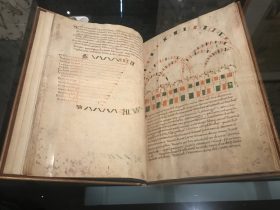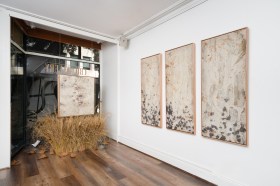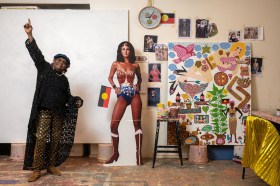The contemporary design and gallery sectors are mourning the death of the remarkable South Australian designer Khai Liew (1952-2023). He died yesterday (11 December) aged 71.
Art Gallery of South Australia (AGSA) Director, Rhana Devenport ONZM said, ‘This loss will reverberate across the country. Khai remains undoubtedly one of Australia’s most influential and visionary designers and he leaves an exceptional legacy.’
Liew was known as a kind and gracious creative, always willing to support other artists and designers. Predominantly known as a furniture designer, his passion was for natural materials, especially wood, as well as stone, linen and less conventional choices such as woven grass.
While Liew studied economics at Flinders University, his design practice was essentially self-taught, coming from a position of restoration and conservation, with his intuitive talent leading to his reputation as a master craftsman and internationally respected designer. He was especially celebrated for his exquisitely crafted one-off commissions and short-run editions in furniture.
This is no better illustrated than when he was working for Louis Vuitton, alongside uber US architect Peter Marino, to create furnishings for the brand’s stores in Tokyo, Osaka, Dubai, Yokohama, Vienna and Sydney.
Building a legacy, supporting a community
In a statement AGSA said: ‘Like many South Australian artists, Liew’s 50-year practice is deeply embedded in the history of our Gallery… A curator’s designer, Liew will be remembered for his deep knowledge of Australian art history, impeccable connoisseurship and generous collegiality. Liew combined his knowledge of the past with a deep appreciation of traditional craft-based practices to produce a unique and original contemporary Australian vernacular in furniture.’
This sentiment was echoed by Samstag Museum of Art Director Erica Green, who described Liew as ‘an extraordinary man of culture’.
She continued, ‘Khai’s original contribution to Australian design culture was memorable, and his role as an artistic collaborator with leading South Australian artists – typically discreet and intimate – highly influential.’
Liew was a Samstag Board member and was preparing for an exhibition with Samstag for the 2024 Adelaide Festival. It was to be a collaboration with ceramicist, Bruce Nuske, not dissimilar to his earlier collaboration with Helen Fuller at Samstag in 2022.
Read: Exhibition Review: Isaac Julien and Helen Fuller, Samstag Museum of Art
Liew enjoyed collaborating with others, and this was best celebrated in the Collec+ors exhibition in 2010, where he worked with Nuske, Julie Blyfield, Kirsten Coelho, Gwyn Hanssen Pigott, Jessica Loughlin and Prue Venables to create one-off pieces of furniture. It was so successful a project that it was selected for the British Insurance Design of the Year Awards, and subsequently exhibited at the London Design Museum in the UK. It has since been collected by AGSA.
Devenport said, ‘Despite Khai’s sudden passing, his legacy will continue to inspire and resonate with our visitors every day here at AGSA. Khai recognised the importance of creating employment and harnessing skilled labour in ensuring the continuity of craft and design. We are immensely grateful for the influence and support he generously gave to fellow artists and AGSA.’
Among the tributes today:
The UniSA Interior Architecture program posted on social media: ‘With deep sorrow, the Interior Architecture program bids farewell to master craftsman, gentleman and one of the most gifted designers of his generation, Khai Liew. Khai was Adjunct of our program and generously devoted time to our students and the University of South Australia.’
Adelaide Central School of Art CEO, Penny Griggs said, ‘Khai was a South Australian treasure. He was highly regarded nationally and internationally, and his contribution to the Australian art and design sector cannot be overestimated. He was also a gentle and caring supporter of fellow creatives. He will be deeply missed.’
The Australian Institute of Architects’ South Australian Branch Executive Director, Nicolette Di Lernia told InDaily, ‘Khai had a consummate understanding of materials and proportion as well as the ability to distil his ideas to achieve beauty through simplicity. He worked with many architects during his career and was a generous collaborator. His work will continue to be enjoyed and treasured by all those who experience it.’
Authentic Design Alliance wrote on Instagram: ‘With profound sadness, Australia bids safe passage to a master craftsman, gentleman and one of the most talented designers of his generation, Khai Liew, who very sadly passed yesterday after a privately fought illness.’
Who was Khai Liew
Born in Kuala Lumpur, Malaysia in 1952, and of Chinese descent, Khai Liew immigrated to Adelaide in 1971. But those childhood memories of colonial architecture in Southeast Asia would always remain strong.
His father was an architectural draftsman, and it was through him he came to appreciate Danish design and Japanese design (he designed a family home with a nod to both).
But it was Liew’s dexterity of material and passion for restoring furniture that brought him to his own design language. Last year writer Jan Henderson described him in Indesign: ‘He loves the warmth, tactility, texture, even the smell of it and is not someone who would work with glass or steel. His designs start with the placement of an object in situ. From that placement, a hand sketch is made, followed by a full-size drawing for the client. Once the design is confirmed, the studio process begins. Liew’s designs are bespoke and this is his point of difference – he leaves the factory runs to others’.
In 1996, he established Khai Liew Design on Magill Road in Norwood and the same year began designing his own furniture, when he was commissioned by the then AGSA Director, Ron Radford AM to make a series of benches for visitors. The Gallery said, ‘Drawing inspiration from the work of Charles Rennie Mackintosh in the Gallery’s collection (944F2 and 944F3), these benches are still in circulation today and have facilitated many wondrous visitor encounters with the collection.’
Liew’s expert knowledge of Australian historical decorative arts led to him consulting to state and national institutions, advising on acquisition and conservation.
In 2012, when William Smart was commissioned to design the residence for philanthropist Judith Neilson – her award-winning Sydney home, Indigo Slam – Liew was brought on to the project to create 190 pieces of furniture for the interior. The commission took him through to 2016. He then went on to do another complete house design and furnishing project in Adelaide, including wallpapers, cabinets and a dresser with 25,000 hand-cut timber triangles. The house was featured in The Australian Financial Review Magazine.
More recently, Liew contributed furniture to the redeveloped Kangaroo Island Lodge.
Read: How is a design boom changing our city?
It goes without saying that Liew was widely recognised for his dedicated contribution to the development of a modernist Australian design aesthetic, and in 2010 he was awarded the South Australian of the Year Arts Award by the State Government. In 2016 he was inducted into the Design Institute of Australia Hall of Fame.
In 2017, he received the Design Institute of Australia’s Design Icon Award and, in 2018, he was recognised as a Design Luminary at the INDE.Awards in Singapore.
Liew’s designs have been exhibited at the Victoria and Albert Museum (London), Design Museum (London) and the Triennale di Milano (Italy). They are also in the collections of the National Gallery of Australia (NGA), Sydney’s Powerhouse Museum, AGAS and the Art Gallery of Western Australia (AGWA).
Devenport concluded: ‘He remains a shining light in Australian contemporary design. He leaves an outstanding legacy and has made an extraordinary impact nationally and internationally. He will be forever remembered as one of Australia’s most innovative, generous and nuanced designers. We have lost a gracious and true gentleman who was respected by all who knew him, and loved by many.’





